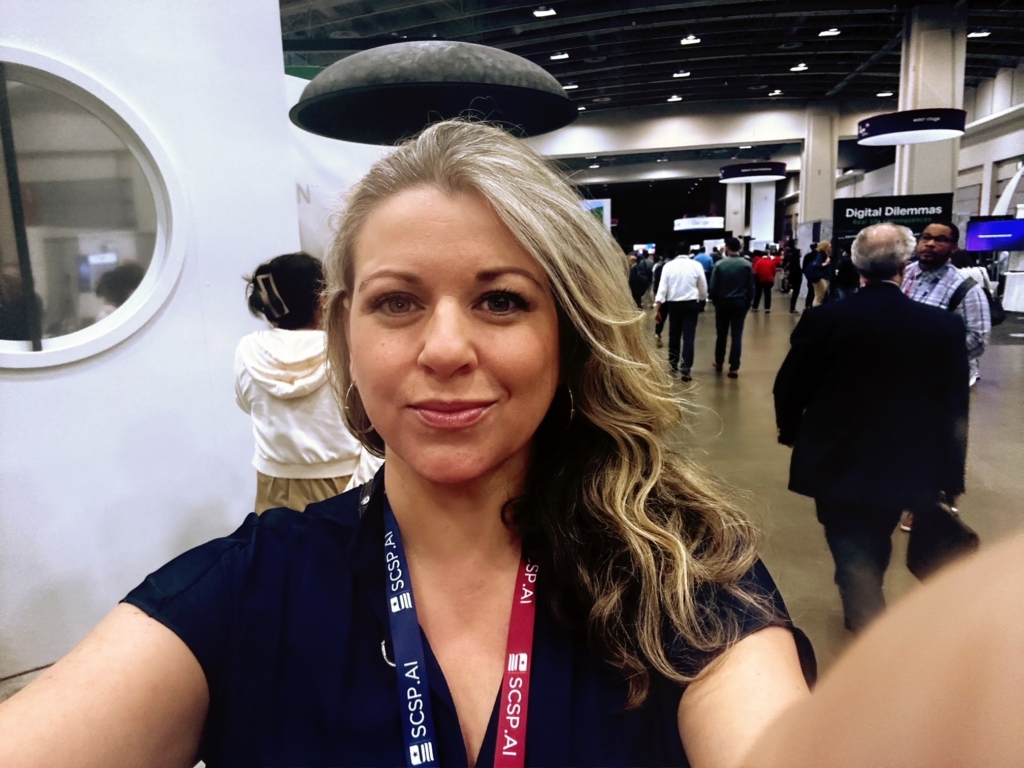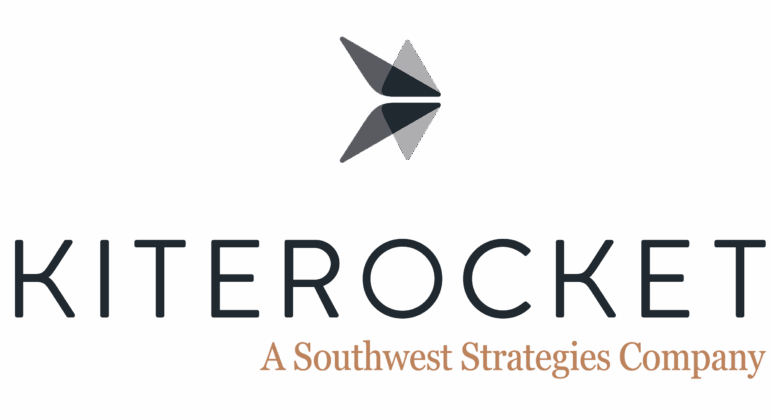A few week’s ago in DC, it felt like something big. A palpable mélange of weighty government departments, combined with the private sector spectrum—from established heavyweights to nascent startups—infused with academia, rife with visionaries, teeming with the upper echelons of media and dotted by the sporadic buzz of voice-controlled drones. It was an expo like no other as some 10,000 gathered to promote, ponder, poke, prod and prepare for the realities, challenges and opportunities born from AI, all through the lens of keeping America competitive, safe and secure.
Produced by the Special Competitive Studies Project, with PR and marketing led by Kiterocket, the AI Expo for National Competitiveness felt like ground zero for a new way of doing things. From defense preparedness to microbiology advancements, renewable energy, ag tech, compute infrastructure, smart manufacturing, political policies and humanitarian concerns, the presentations and exhibits provided a comprehensive view of AI’s potential to revolutionize numerous sectors, setting the stage for a future rich with innovation and progress.
Here are some interesting insights and innovations from the show floor:
GPU, where are you? At the ground level, AI needs an unrelenting amount of GPU chips (graphic processing units) to thrive, which is creating a significant supply shortage. To put it in perspective, experts suggest Nvidia, which owns the lion’s share of the GPU market, is expected to ship two to four million units in 2024—Meta alone needs 600,000. To mitigate the shortages, companies and governments are making substantial investments to boost production, else risk falling behind on the AI race if they don’t have the chips to build from. Additionally, innovative solutions like GPU rental platforms, such as Massed Compute, are emerging to provide alternative access to computing power, helping to alleviate some of the immediate pressure on supply.
The Battle for Brains: The AI and related advanced computing ecosystem is experiencing a severe talent shortage. In response, many colleges are establishing specialized programs to train the next generation of AI specialists. The Expo included a dedicated section devoted to AI academia, as well as a recruitment stage for companies seeking candidates, which was packed every time I walked by. Visas will be a contributing factor in these talent wars as superpower countries seek out and woo experts globally.
More Intelligent Command Control: AI technology is becoming increasingly sophisticated, with advancements in voice-controlled systems and multi-step process automation (do this, then do this, then do this next, all in a single command). The voice-controlled drone demo was a sight to see, and despite being cool, demonstrated the benefit of allowing the operator to focus on the task at hand versus trying to deftly manipulate a precision controller—this not only saves on training time, but can save precious seconds and reaction times during critical moments.
A less visual but more practical application for the masses, Kevin Tupper, Principal Solution Architect and AI Evengelist for Microsoft, showcased his vision of AI emerging into a multi-step architecture for outputs, expanding beyond the current wide use of generative AI (draft my blog post, make me a meal plan, write my essay due tomorrow) to a more advanced workflow that involves a cycle of perceiving, learning, abstracting and reasoning, with human and machine collaborating throughout. Regaling us with a program he “whipped up” over the weekend, he demonstrated the use of AI to digest and analyze a hundreds-of-pages long proposed congressional bill, identifying the positives and pitfalls, analyzing it from the perspective of various subject matter experts, and providing human review and input checkpoints along the way to ensure that the AI outputs are safe and responsible. It was impressive, and an insight into just how much the modern workplace is about to speed up once “digital AI agents” are commonplace cube mates.
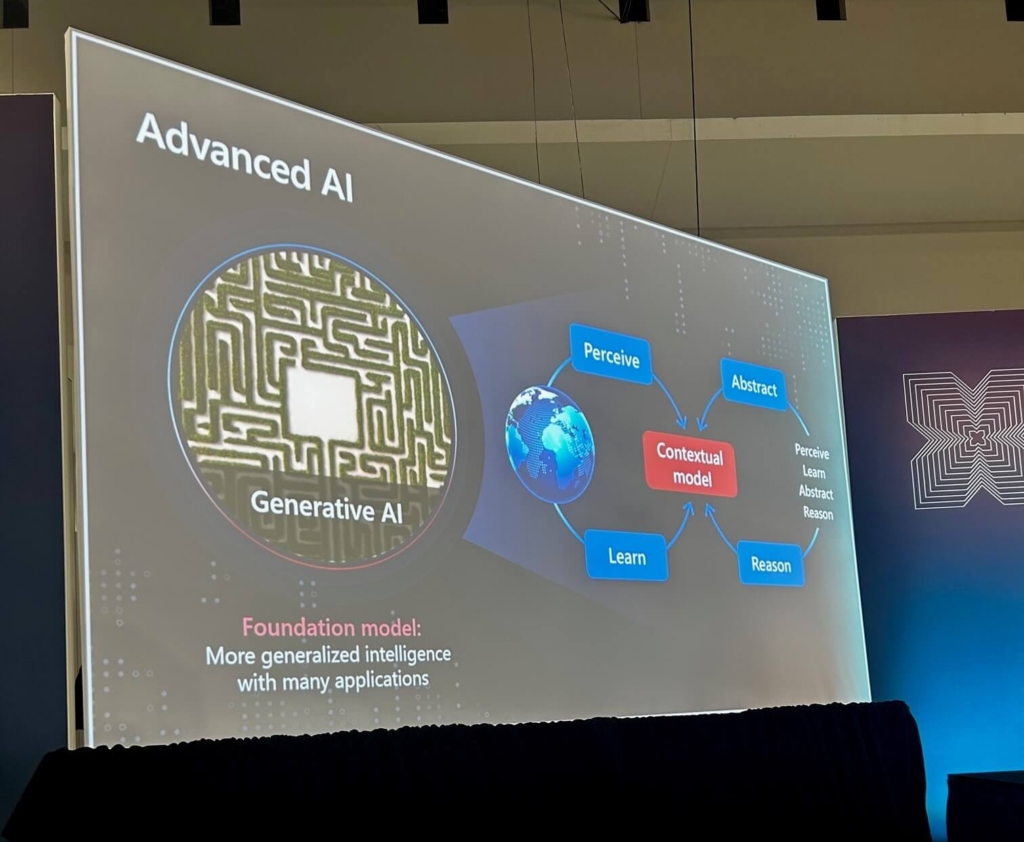
Fighting Fakes: One booth that caught my eye, TruePic provides an embedded software solution (such as in mobile phones) that creates a verification signature for photos taken with the device, ensuring their authenticity and detecting any post-capture manipulation. With the company noting more than half of online misinformation stems from manipulated images, this represents a welcome step forward in combating digital misinformation and fraud by enhancing trust in visual content. The technology would prove particularly valuable for verifying images used in news media among the rise of “citizen journalism,” as well as insurance claims, and on a lighter note, even to prevent catfishing.
Sobering Realities: The cautionary side of AI and other technology, particular for those in crisis and conflict zones, was apparent at the interactive “Digital Dilemma” display put on by the International Committee of the Red Cross. The scene was set with a makeshift shelter, including sparse food supplies, a corner with kids toys, and a modest coffee table where it was easy to imagine oneself desperately huddled around trying to piece together inbound information across spotty TV, radio and pamphlet drops. The radio crackled with a breaking news report a civilian target had unintentionally been bombed due to AI failure of a weapon systems, while a letter warned the biometric data you’d provided to confirm eligibility to receive aid supplies had fallen into the hands of bad actors. I encourage you to immerse yourself in their online experience here.
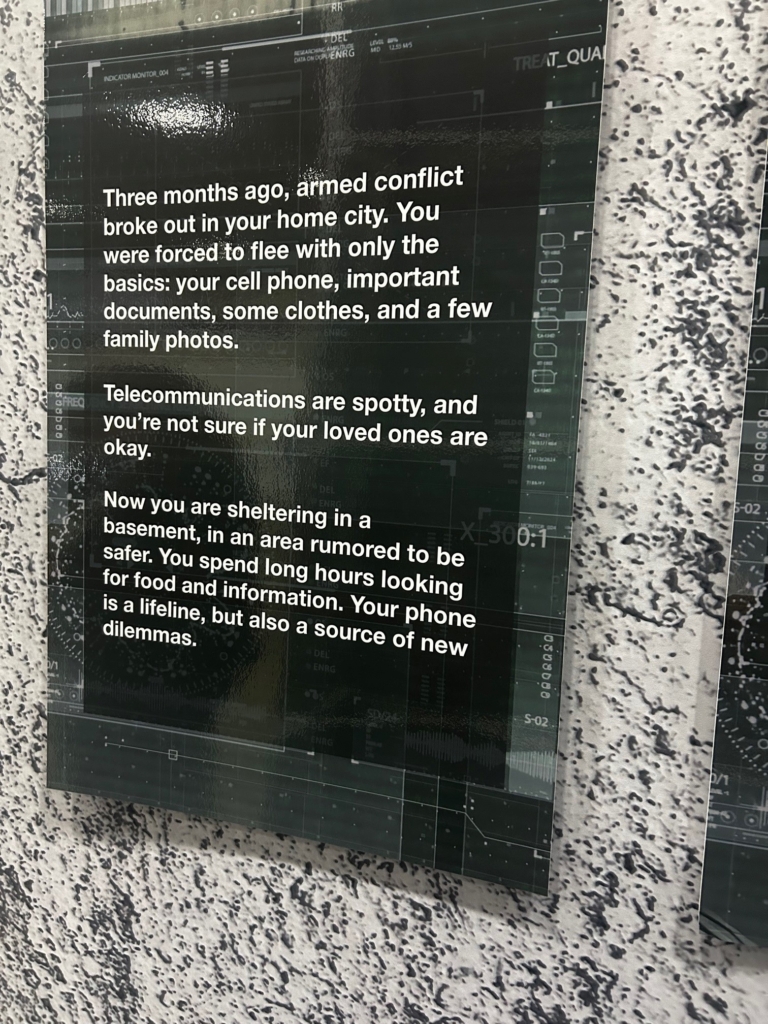
Getting Fusion on the Grid: Experts claim fusion energy is on the cusp of becoming a reality, with potential to revolutionize America’s energy landscape by providing a stable, renewable, independent energy supply that is also cost-effective. One company I spoke to ambitiously plans to have a fusion plant (fashioned from a transformed coal facility) up and feeding to a grid as early as 2027, while Tokamak is aiming for 2034 and currently selecting a site to repurpose or build from scratch. In this field, they are leveraging AI to predict and manage the stability of the fragile magnetic fields that contain the million-degree fusion reactions. By using AI, they aim to anticipate when these magnetic fields might collapse, allowing the program to intervene and maintain the fusion process for extended periods, from hours to days, instead of just a few seconds.
Significant funding is essential to make fusion energy a reality, and advocates are urging the Department of Defense (DoD) to generously open their pocketbooks. The argument for DoD to lead the funding charge is that a reliable fusion energy supply would offer substantial national security benefits, greatly enhancing America’s energy independence and resilience.
Microsoft’s Bug Box: The technology giant is deploying “biological weather stations” to “identify, track, sample, and forecast key species and biological threats” from areas that are often dangerous and difficult to collect from. The unassuming white box can ‘heat up it’s skin like the skin of an animal,” “breath out” and emit light at different frequencies to attract nature (bugs) to it. Within nanoseconds the station scans and identifies species as they whiz by, and can selectively suck in those flagged as interesting for further testing on the spot, then relaying the data back to command central. This innovation can be used to detect pathogen risks for decreasing or preventing disease outbreaks, monitor ecosystem changes and identify food security risks.
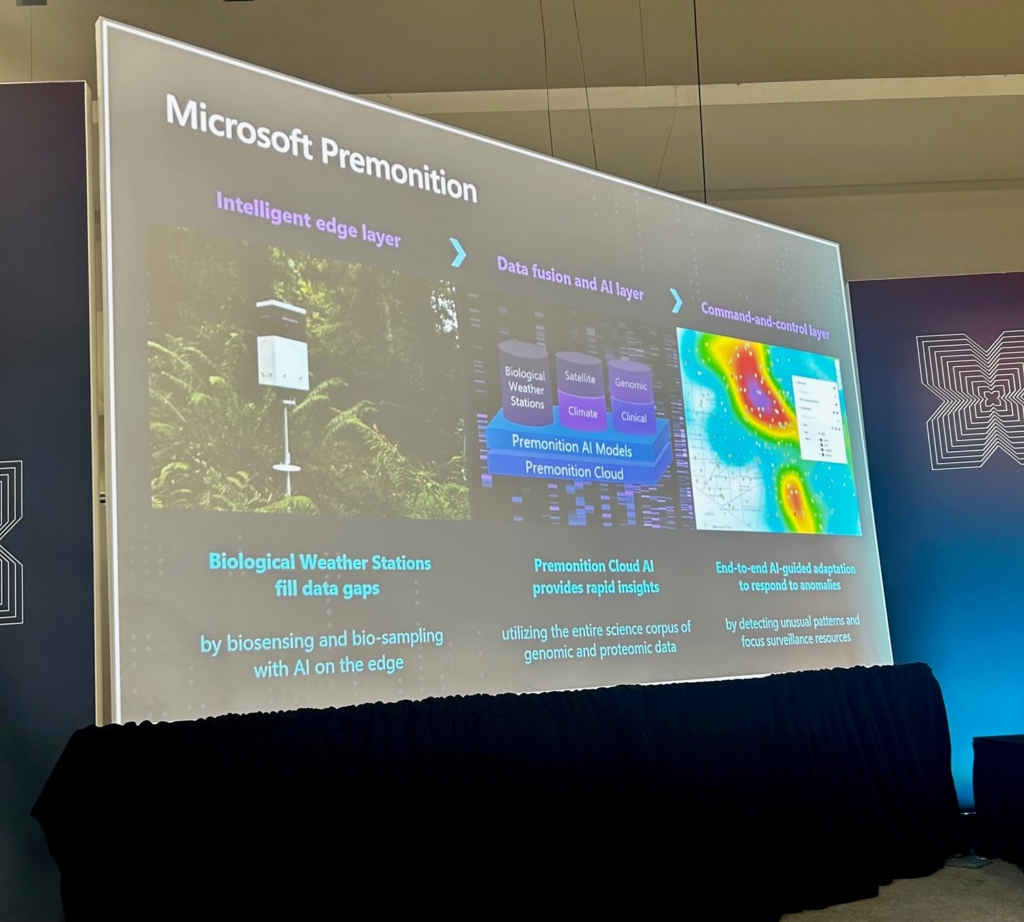
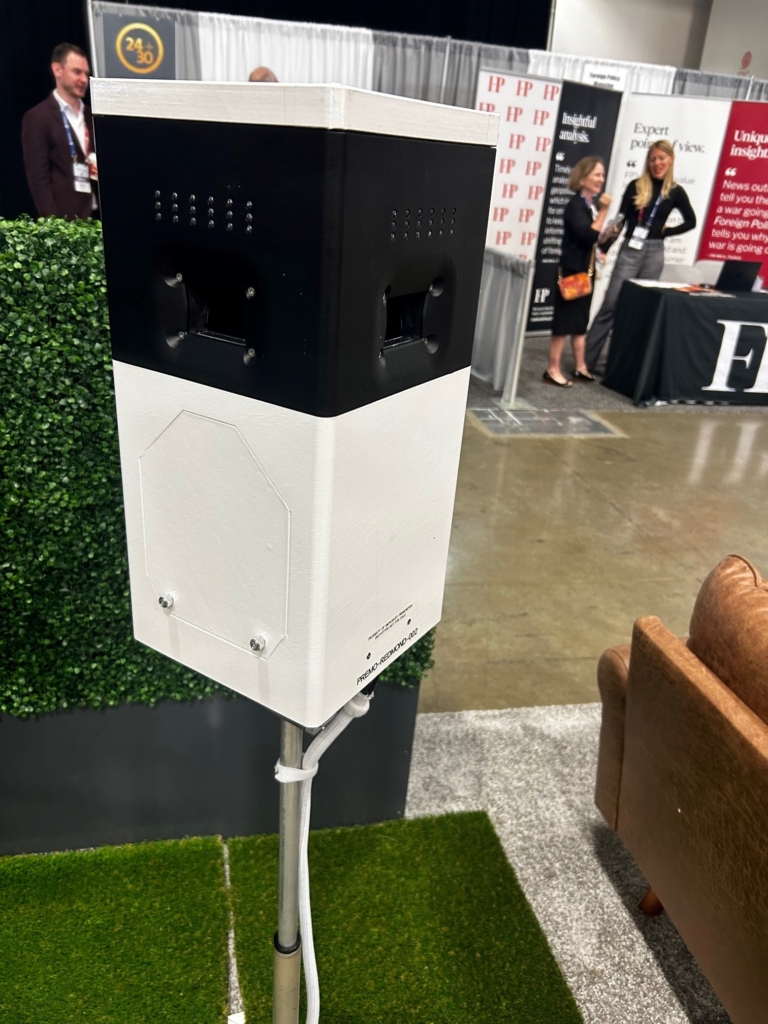
The AI Expo for National Competitiveness demonstrated the potential for AI to revolutionize various sectors is immense, though brings both challenges and opportunities that must be balanced. Moving forward, stakeholders across government, private sector, and academia must collaborate to ensure AI technologies are developed responsibly and equitably. At Kiterocket, we are proud to have led the PR and marketing efforts for this groundbreaking Expo, which by all accounts will return next year.
Editor’s Note: Kiterocket has a focused specialty on PR and marketing for AI and emerging technology companies, using our communications prowess to influence adoption and advance the brands advancing the world. For more information on our services, visit here or drop me a line: amanda (at) kiterocket (dot) com.
